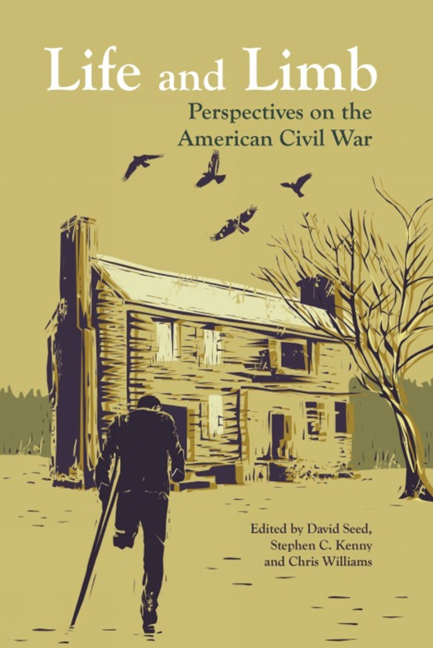Book contents
- Frontmatter
- Contents
- List of Illustrations
- Acknowledgements
- Introduction: Civil War Voices and Views
- MEDICAL AND SURGICAL MEMOIRS
- ACCOUNTS OF NURSING
- MEDICAL FACILITIES AND PATHOLOGY
- PHOTOGRAPHY
- AMPUTATIONS AND PROSTHETIC LIMBS
- IN THE FIELD OF BATTLE
- Diary: October 29, 1862: The Civil War Diary and Letters of Sergeant Henry W. Tisdale
- The Battle of Shiloh: Aftermath: ‘The Battle of Shiloh’ from Annals of the War
- The Battle of Ellyson's Mills: A Confederate Surgeon's Letters to His Wife Spencer Glasgow Welch
- Aftermath of Battle, Cedar Mountain, Virginia: ‘Personal Recollections of the War’
- After the Battle of Winchester: A Virginia Yankee in the Civil War
- The Negro as a Soldier
- Army Life in a Black Regiment
- POST-WAR NARRATIVES
- Contributors
- Select Bibliography
- Index
- Plates
The Battle of Shiloh: Aftermath: ‘The Battle of Shiloh’ from Annals of the War
from IN THE FIELD OF BATTLE
- Frontmatter
- Contents
- List of Illustrations
- Acknowledgements
- Introduction: Civil War Voices and Views
- MEDICAL AND SURGICAL MEMOIRS
- ACCOUNTS OF NURSING
- MEDICAL FACILITIES AND PATHOLOGY
- PHOTOGRAPHY
- AMPUTATIONS AND PROSTHETIC LIMBS
- IN THE FIELD OF BATTLE
- Diary: October 29, 1862: The Civil War Diary and Letters of Sergeant Henry W. Tisdale
- The Battle of Shiloh: Aftermath: ‘The Battle of Shiloh’ from Annals of the War
- The Battle of Ellyson's Mills: A Confederate Surgeon's Letters to His Wife Spencer Glasgow Welch
- Aftermath of Battle, Cedar Mountain, Virginia: ‘Personal Recollections of the War’
- After the Battle of Winchester: A Virginia Yankee in the Civil War
- The Negro as a Soldier
- Army Life in a Black Regiment
- POST-WAR NARRATIVES
- Contributors
- Select Bibliography
- Index
- Plates
Summary
The following is taken from Colonel Willis De Hass, ‘The Battle of Shiloh,’ Annals of the War Written by Leading Participants North and South, ed. Alexander Kelly McClure (Philadelphia: Times Publishing Co., 1979). The pieces in this collection were originally published in the Philadelphia Weekly Times. In the introduction, the editor declares that the Annals will ‘furnish the most valuable contributions to the future historian which have yet given to the world.’
Gradually the firing ceased. The Sabbath closed upon a scene which had no parallel on the Western Continent. The sun went down in a red halo, as if the very heavens blushed and prepared to weep at the enormity of man's violence. Night fell upon and spread its funereal pall over a field of blood where death held unrestrained carnival! Soon after dark the rain descended in torrents, and all through the dreary hours of that dismal night it rained unceasingly. The groans of the dying, and the solemn thunder of the gunboats came swelling at intervals high above the peltings of the pitiless storm.
[…]
The dead were buried on the spot; the wounded removed to camp; the rebel camp destroyed, with a large amount of property, and this was the last of the fighting at Shiloh. The losses sustained by both armies exceeded the frightful number of twenty-five thousand men. Four years after the battle, a writer, visiting Shiloh and Corinth, gave a hideous picture of the condition of things. He stated that twelve thousand Confederate soldiers lay unburied on the two fields! After the battle of Shiloh, General Grant ordered the dead of both armies to be buried. The inhumation, however, consisted of little more than a thin covering of earth, which the heavy rains have long since washed off, and the remains of brave men, who periled all for their country's sake, he exposed to the elements. This fact is disgraceful to the government and the people, and should be remedied with the least possible delay. Instead of squandering means over idle parades, it should be our duty and pleasure to give the bleaching bones of our gallant dead the rites of decent burial.
- Type
- Chapter
- Information
- Life and LimbPerspectives on the American Civil War, pp. 154 - 155Publisher: Liverpool University PressPrint publication year: 2015

